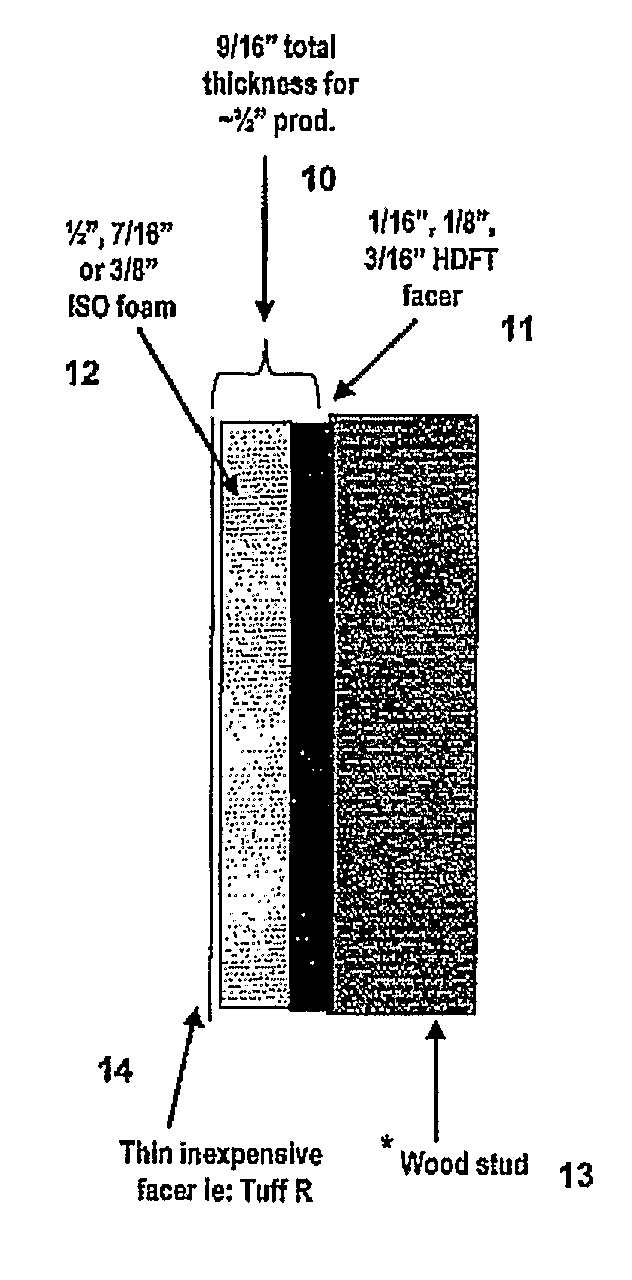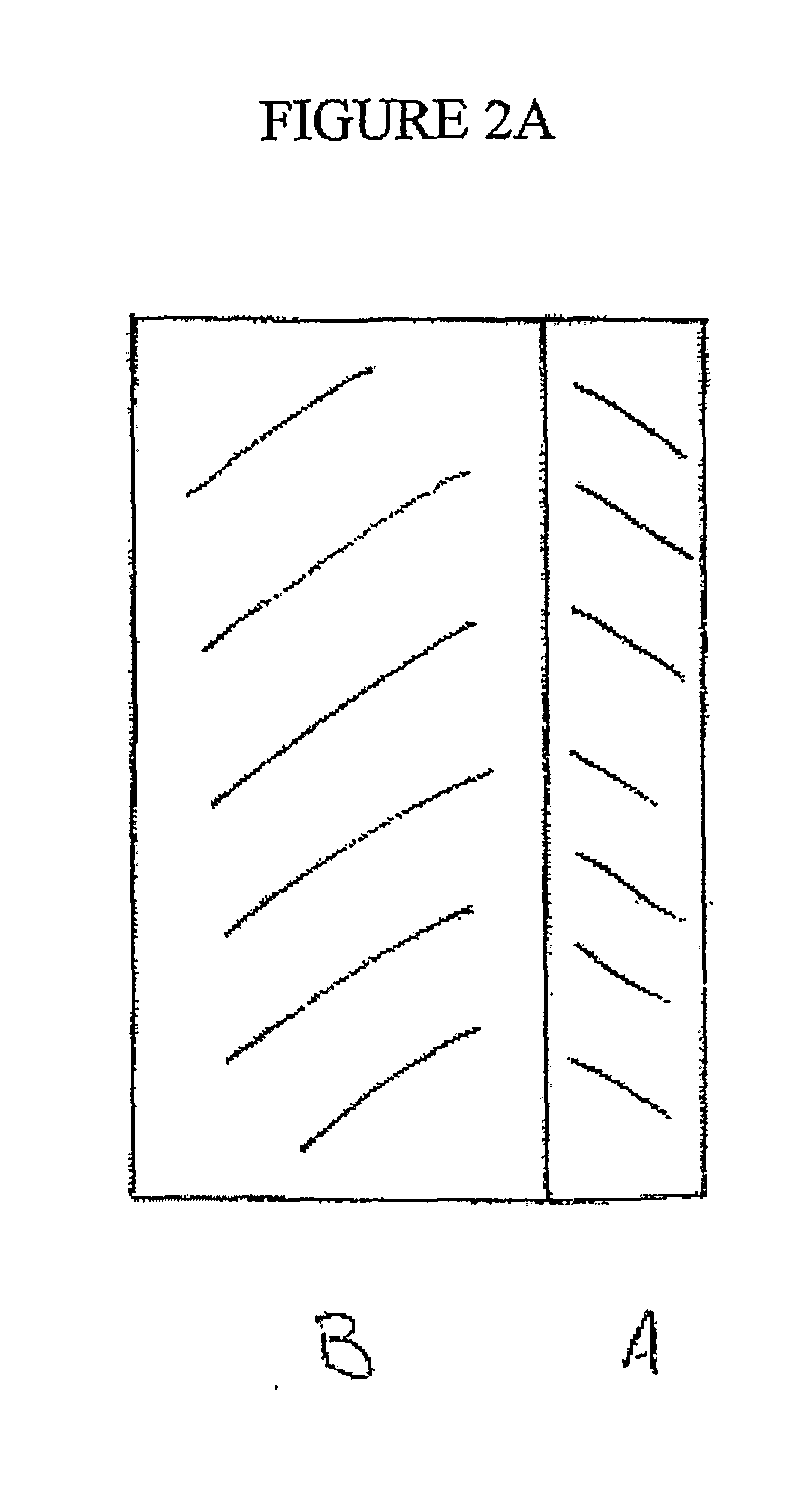Structural Insulation Sheathing
- Summary
- Abstract
- Description
- Claims
- Application Information
AI Technical Summary
Benefits of technology
Problems solved by technology
Method used
Image
Examples
specific embodiments
Process for Producing Structural Facers:
[0048]The high-density foamed structural facer is manufactured in a co-extrusion process composed of an A-B-A structure of high-density skins with a lower density foamed core. The skins are co-extruded in a volume (or thickness) ratio of 10 to 30% with the core structure providing the remaining volume. Foam was produced using the process described in U.S. Pat. No. 6,544,450 and the extruder system of its Example 1, although the resin formulations of these examples differ from those of the examples of the '450 patent. Table I collects the formulations and base properties of the A-B-A structural facers used in the examples.
Process for Producing Structural Facer / PIR Foam Laminates:
[0049]A fabrication box (36×35× 7 / 16 inches) was used as a container to produce restrained-rise foams laminated directly to structural facers produced by the extrusion process described above. The facer was placed exterior-side down in the box, a box pour of polyisocyan...
PUM
| Property | Measurement | Unit |
|---|---|---|
| Thickness | aaaaa | aaaaa |
| Thickness | aaaaa | aaaaa |
| Pressure | aaaaa | aaaaa |
Abstract
Description
Claims
Application Information
 Login to View More
Login to View More - R&D
- Intellectual Property
- Life Sciences
- Materials
- Tech Scout
- Unparalleled Data Quality
- Higher Quality Content
- 60% Fewer Hallucinations
Browse by: Latest US Patents, China's latest patents, Technical Efficacy Thesaurus, Application Domain, Technology Topic, Popular Technical Reports.
© 2025 PatSnap. All rights reserved.Legal|Privacy policy|Modern Slavery Act Transparency Statement|Sitemap|About US| Contact US: help@patsnap.com



